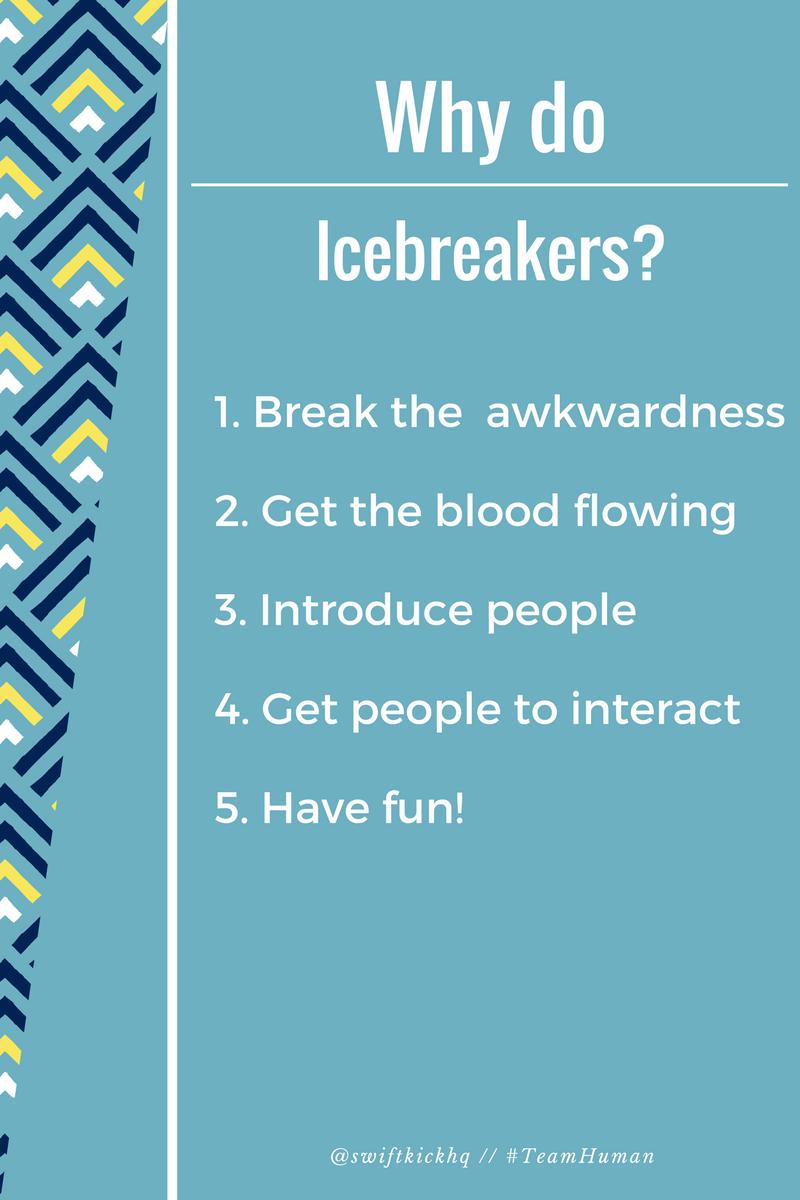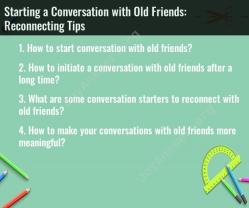What are icebreakers and why are they important?
Icebreakers are activities or techniques designed to facilitate interaction, engagement, and communication among individuals in a group setting. They serve as an initial social lubricant, helping people to get to know one another, establish rapport, and create a more comfortable and inclusive atmosphere. Icebreakers are typically used at the beginning of a meeting, workshop, training session, or group event to break down initial social barriers and set a positive tone for collaboration and communication.
Here are several reasons why icebreakers are important in group settings:
Foster Relationships: Icebreakers help participants form initial connections and relationships with one another. These relationships are essential for effective teamwork and collaboration.
Reduce Anxiety and Tension: In new or unfamiliar group settings, individuals may experience anxiety or tension. Icebreakers help alleviate these feelings by creating a more relaxed and welcoming environment.
Promote Inclusivity: Icebreakers encourage active participation from all members of the group, ensuring that everyone has a chance to be heard and acknowledged, which promotes inclusivity.
Enhance Communication: Icebreakers improve communication skills, as participants learn to listen, speak, and engage with others. This is valuable for group discussions and problem-solving.
Boost Engagement: Icebreakers make sessions more engaging and interactive, which can increase participants' interest and motivation to actively participate in the group activity or discussion.
Break Down Stereotypes: Icebreakers challenge preconceived notions and stereotypes about group members, promoting a deeper understanding of one another.
Set a Positive Tone: A well-executed icebreaker can set a positive and productive tone for the rest of the meeting or group activity. It can signal that the session is inclusive and that participants' contributions are valued.
Encourage Creativity: Many icebreakers involve creative thinking and problem-solving, which can stimulate participants' creativity and innovative thinking.
Build Trust: Trust is a foundational element for successful group dynamics. Icebreakers help build trust among participants by encouraging open communication and shared experiences.
Energize the Group: Icebreakers can inject energy into a group and help participants transition from a passive to an active state of participation.
Collect Data and Insights: Some icebreakers can be designed to collect information or insights from participants, which can be valuable for tailoring the rest of the group session.
Improve Group Dynamics: By helping people feel more comfortable and connected, icebreakers enhance the overall group dynamics, leading to more effective collaboration and decision-making.
While icebreakers are typically associated with group meetings and team-building activities, they can also be applied in various settings, including classrooms, conferences, workshops, and social events. The choice of icebreaker should align with the goals and dynamics of the specific group and the desired outcomes for the session. Effective icebreakers are those that engage participants, foster a sense of belonging, and create a positive and open atmosphere for further interaction and collaboration.
The Importance of Icebreakers in Social Settings
Icebreakers play a crucial role in social settings by fostering connections, easing awkwardness, and creating a more relaxed and enjoyable atmosphere. They serve as a catalyst for meaningful interactions, allowing individuals to break the ice, overcome initial hesitations, and engage in deeper conversations. Icebreakers provide a structured and engaging way to introduce oneself, share interests, and discover common ground. This shared experience can lay the foundation for building friendships, expanding social circles, and enhancing overall social experiences.
Effective Icebreaker Activities for Building Connections
A variety of icebreaker activities can be tailored to different social settings and group dynamics. Here are some effective strategies for building connections through icebreakers:
Shared Experiences: Activities that encourage participants to share personal experiences or anecdotes can spark engaging conversations and reveal common interests. For instance, "Two Truths and a Lie" or "Find Someone Who" prompts encourage self-disclosure and provide opportunities to connect with others based on shared experiences or interests.
Teamwork and Collaboration: Collaborative icebreakers can break down barriers and encourage teamwork. Activities like building a structure using limited materials or solving a puzzle together foster a sense of camaraderie and shared accomplishment.
Creative Expression: Activities that involve creativity or humor can lighten the mood and encourage participants to express themselves freely. Drawing prompts, storytelling games, or improv exercises can lead to laughter, shared experiences, and a sense of connection.
Movement and Energy: Icebreakers that involve physical movement can boost energy levels and break down inhibitions. Dancing, stretching, or simple games can create a sense of playfulness and encourage interaction.
How Icebreakers Can Improve Communication and Relationships
Icebreakers can significantly enhance communication and relationships in various ways:
Reduced Anxiety and Shyness: Icebreakers provide a structured and low-stakes environment for individuals to interact, reducing anxiety and shyness. This can lead to more open and authentic communication.
Increased Empathy and Understanding: By sharing personal experiences and perspectives, icebreakers can foster empathy and understanding among participants. This can strengthen relationships and reduce conflicts.
Enhanced Communication Skills: Icebreakers encourage active listening, respectful interactions, and clear communication. This can improve overall communication skills and build stronger relationships.
Increased Confidence and Self-Esteem: Icebreakers can boost confidence and self-esteem by providing opportunities for successful interactions and positive feedback. This can lead to more assertive and engaging communication.
In conclusion, icebreakers serve as valuable tools for building connections, enhancing communication, and fostering meaningful relationships in social settings. By creating a relaxed and engaging atmosphere, icebreakers encourage individuals to step out of their comfort zones, connect with others, and build lasting relationships.



